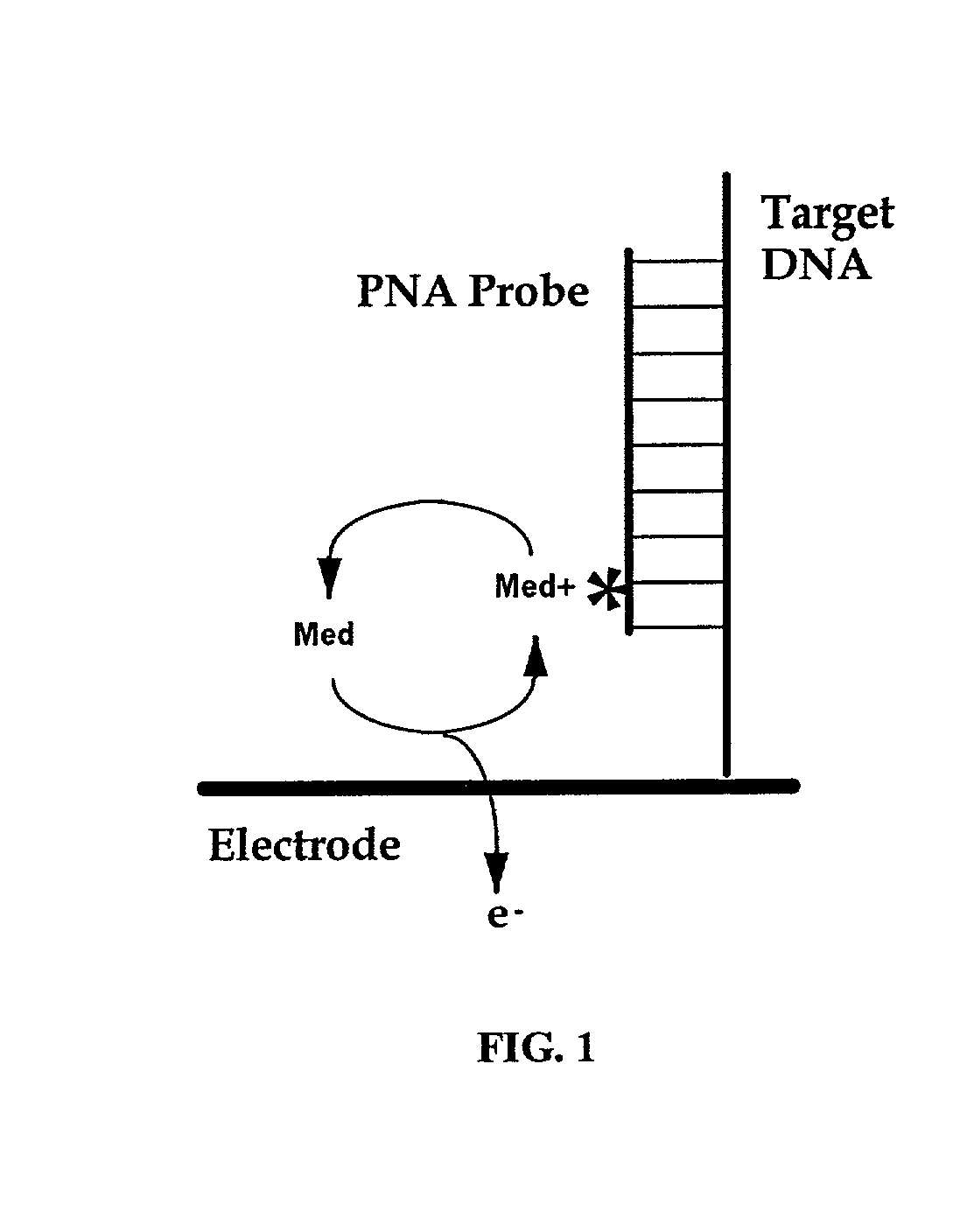Electrochemical detection of nucleic acid sequences
a nucleic acid sequence and electrochemical technology, applied in the field of sensor technology and molecular diagnostics, can solve the problems of insufficient rapidity, low cost, simple or robust routine application, and preventing the versatility of diagnostic assays that are desired or needed
- Summary
- Abstract
- Description
- Claims
- Application Information
AI Technical Summary
Benefits of technology
Problems solved by technology
Method used
Image
Examples
Embodiment Construction
[0084] The present invention provides methods and compositions for the selective, rapid, and sensitive electrochemical detection of any nucleic acid, particularly those with a known sequence or sufficiently identified to allow selection of appropriate hybridization probes. The methods are applicable to the analysis of samples in clinical, research, or outdoor, i.e. field settings, and are also useful for monitoring in genetic epidemiology and environmental remediation.
[0085] The quantifiable electrochemical signals of the invention result from electroactive groups bound or in close proximity to a working electrode surface by an immobilized probe-target. A free electroactively labeled probe in solution that is not immobilized on the electrode surface does not couple efficiently enough to the electrode to produce an electrode response (O'Daly et al., 1992). Thus, no separation of free probe from hybridized probe of the invention is needed.
[0086] In general, an electrochemical analysis...
PUM
| Property | Measurement | Unit |
|---|---|---|
| surface area | aaaaa | aaaaa |
| time | aaaaa | aaaaa |
| sizes | aaaaa | aaaaa |
Abstract
Description
Claims
Application Information
 Login to View More
Login to View More - R&D
- Intellectual Property
- Life Sciences
- Materials
- Tech Scout
- Unparalleled Data Quality
- Higher Quality Content
- 60% Fewer Hallucinations
Browse by: Latest US Patents, China's latest patents, Technical Efficacy Thesaurus, Application Domain, Technology Topic, Popular Technical Reports.
© 2025 PatSnap. All rights reserved.Legal|Privacy policy|Modern Slavery Act Transparency Statement|Sitemap|About US| Contact US: help@patsnap.com



